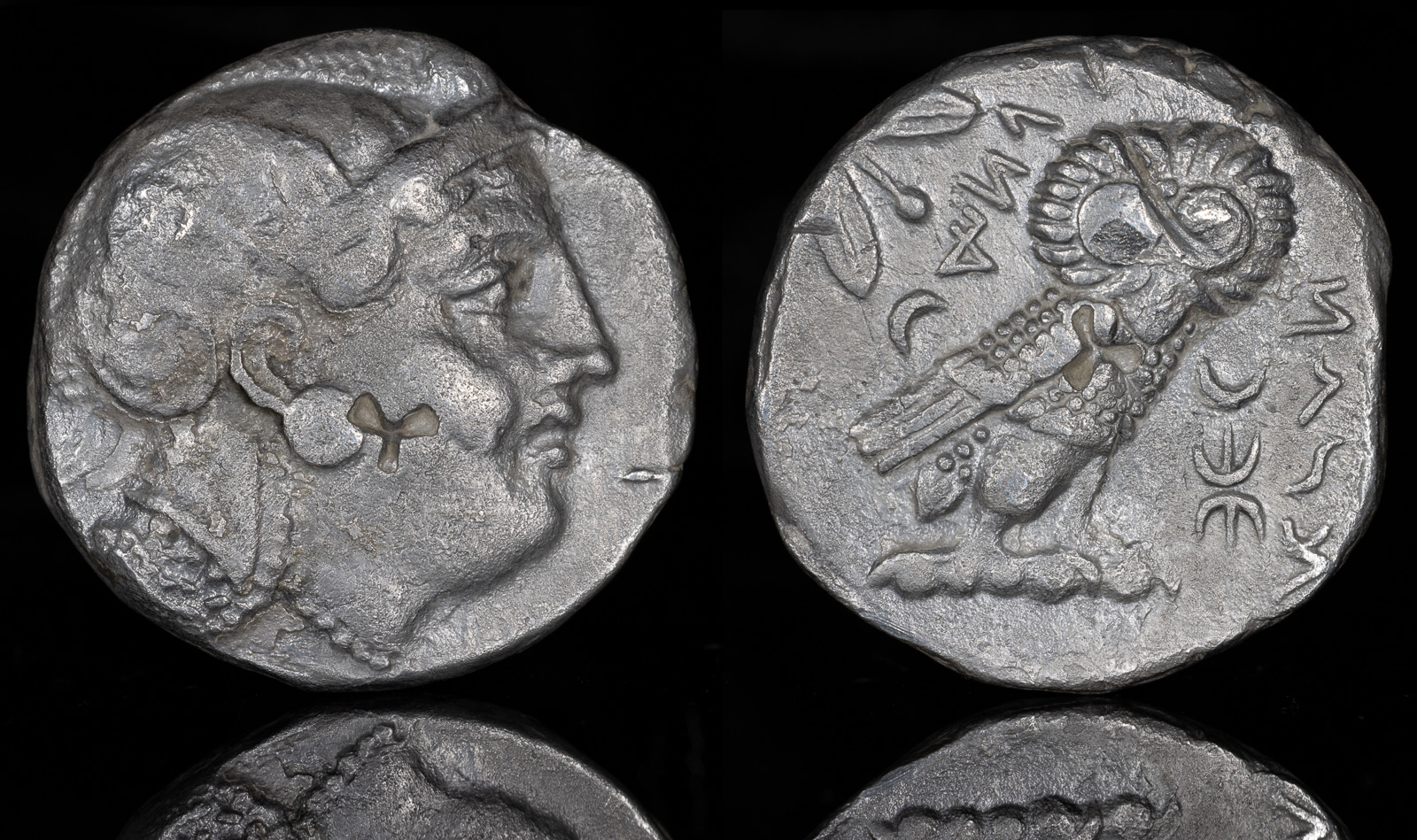Berry
View All Tags
The use of berries on coins was most commonly associated with the deity Dionysus, the god of wine, revelry, and the vine. Dionysus, often linked to agriculture, fertility, and the life cycle, was represented on coins with various symbols of abundance, such as grapevines, wine cups, and sometimes berries. Berries, particularly those that grew in association with vines or wild plants, could symbolize the fruits of the earth and the bounty provided by nature, reflecting the cyclical nature of life and harvest. In this context, berries could also be seen as a fertility symbol, aligning them with Dionysus’s domain over the natural world’s capacity to renew and bear fruit.
Coins from certain Greek colonies, especially those in regions known for agriculture, might feature berries as part of a larger representation of the bountiful harvests that were essential to the community’s prosperity. The depiction of berries in these contexts might have been intended to emphasize the role of the local deities or spirits in ensuring the fertility of the land, promoting agricultural success, and maintaining the economic stability of the city-state or region. The berries on coins could thus be a form of propaganda, reminding citizens and traders of the relationship between divine favor and material well-being.
Furthermore, the portrayal of berries may also have had a ritualistic or spiritual dimension. In ancient Greek religion, certain fruits, including berries, were often used in sacred offerings to gods and were thought to carry divine blessings. Therefore, their depiction on coins may have acted as a reminder of the divine protection and blessing that the city or ruler claimed to have, particularly in times of war or economic hardship. By featuring these natural symbols, Greek cities and rulers could underscore their connection to the gods and the importance of natural abundance in ensuring their success.

Egypt, Achaemenid Province. Sabakes, satrap, AR Tetradrachm. Circa 340-333 BCE
16.61g, 25mm, 9h.
Head of Athena to right, wearing earring, necklace, and crested Attic helmet decorated with three olive leaves over visor and a spiral palmette on the bowl / Owl standing to right with head facing, olive sprig with berry and crescent in upper left field; uncertain letters to left, Sabakes symbol and SWYK (in Aramaic) to right.
Van Alfen Type III, 24-34 var. (O11/R- [unlisted rev. die]); Nicolet-Pierre, Monnaies 18-26 (same obv. die); SNG Copenhagen 4 var. (no letters on left of rev.); BMC 265 var. (same).